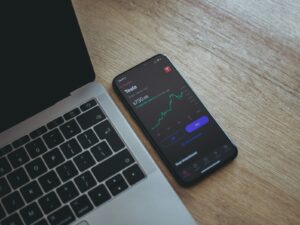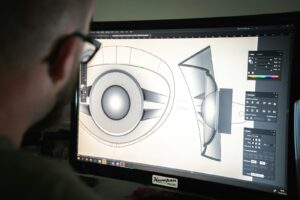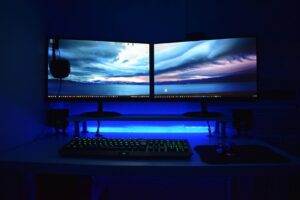| Shopping Ads: Invest in Hidden Masterpiece: Rare Antique Oil Paintings For Sale. Limited Originals Available 💰😊 Are you looking for authentic hidden masterpiece? Explore old master antique oil paintings from the Renaissance and Baroque eras. From 16th-century portraits to 18th-century landscapes. Authenticity guaranteed, Old Master antique oil paintings for sale. Shop Now! 🎨 Renaissance And Baroque Art Landscape Antique Paintings Old Master Portrait Paintings |
How is Artificial Intelligence Used in Art?
Artificial Intelligence (AI) has revolutionized the art world, providing innovative tools and methodologies for creating, curating, and experiencing art. By blending computational power with human creativity, AI expands the boundaries of artistic expression and redefines how art is perceived and valued. Below, we delve into the multifaceted applications of AI in the art domain.
1. Generative Art
Generative art is one of the most prominent areas where AI shines. Artists and technologists use algorithms, especially Generative Adversarial Networks (GANs), to create unique, often stunning artworks. GANs consist of two neural networks—a generator and a discriminator—that work together to produce images resembling human-made art. Examples include:
- DeepDream by Google: An algorithm that enhances patterns in images, creating surreal, dreamlike visuals.
- AI Portraits: Platforms like AI Portrait Ars turn photos into Renaissance-style portraits.
- Artbreeder: A collaborative tool allowing users to blend and mutate images into new forms.
Generative Art is a form of artistic expression created using algorithms, systems, or rules, often implemented in computer code. It involves using a set of instructions or programs to generate artworks, which can range from static images to dynamic, interactive experiences.
Key Characteristics of Generative Art:
- Rule-based Creation:
- The artist designs a system or algorithm with a set of rules that define how the artwork is generated.
- The process often includes randomness or procedural logic to introduce variation and unpredictability.
- Collaboration with Machines:
- Generative art often involves software, hardware, or other automated systems as co-creators.
- The artist controls the framework, but the machine introduces variability and complexity.
- Infinite Variations:
- By tweaking parameters or allowing for randomness, generative art can produce an infinite number of unique pieces from the same code or system.
- Mediums:
- It spans various mediums, including digital graphics, animation, music, sculpture, and even architecture.
- Interactivity:
- Some generative artworks are interactive, responding to input from users or the environment (e.g., movement, sound, or data streams).
Examples of Generative Art:
- Algorithmic Art: Art created using mathematical formulas and computational processes.
- Fractal Art: Art generated from fractal mathematics, often displaying complex, self-repeating patterns.
- Procedural Generation: Used in video games or simulations to create landscapes, textures, or objects.
- AI-driven Art: Created using machine learning models like GANs (Generative Adversarial Networks) or diffusion models.
Notable Generative Artists and Tools:
- Artists:
- Vera Molnar: A pioneer in algorithmic art.
- Casey Reas: Co-creator of Processing, a popular tool for generative art.
- Refik Anadol: Known for immersive, AI-driven art installations.
- Tools:
- Processing: A programming language designed for visual arts.
- p5.js: A JavaScript library for creative coding.
- TouchDesigner, Houdini: Tools for real-time generative visuals.
- AI platforms like Runway ML or DALL·E.
Generative art is valued not only for its aesthetic appeal but also for its ability to explore the intersection of creativity, technology, and randomness, challenging traditional notions of authorship and artistic control.
2. AI as a Collaborative Tool
AI acts as a partner for artists, offering inspiration and enabling new workflows. Tools like Runway ML and Adobe Sensei simplify complex tasks such as:
- Color palette generation
- Texture synthesis
- Style transfer, where the essence of one artwork is applied to another image.
These tools allow artists to experiment with ideas they might not have considered otherwise.
Artificial Intelligence (AI) as a collaborative tool is about augmenting human capabilities rather than replacing them. By leveraging AI, individuals and teams can improve efficiency, creativity, and decision-making in a variety of contexts. Here’s how AI serves as a collaborative tool:
1. Enhanced Productivity
AI automates repetitive and time-consuming tasks, allowing humans to focus on higher-value work. For instance:
- In Office Work: AI-powered tools like scheduling assistants or transcription services streamline administrative tasks.
- In Creative Work: AI can assist with generating drafts, editing, or suggesting design elements.
2. Idea Generation and Brainstorming
AI systems, such as ChatGPT or image generators, can act as brainstorming partners. They provide diverse perspectives, spark creative ideas, and help overcome mental blocks by suggesting new approaches or alternatives.
3. Data Analysis and Decision Support
AI excels at analyzing large datasets, identifying patterns, and providing actionable insights. In collaboration, this means:
- Offering real-time feedback and recommendations.
- Supporting data-driven decisions in fields like finance, healthcare, and marketing.
4. Personalization in Communication
AI tools adapt to individual preferences, improving collaboration by:
- Translating languages in real-time for multilingual teams.
- Summarizing long conversations or documents.
- Customizing messages to suit different stakeholders.
5. Facilitating Remote Work
With the rise of remote work, AI plays a critical role in maintaining team connectivity and efficiency by:
- Managing virtual meetings (e.g., providing transcriptions and action items).
- Monitoring team productivity and workflows.
- Supporting virtual collaboration through shared AI-powered platforms.
6. Learning and Skill Building
AI tools serve as on-demand mentors, providing immediate answers, tutorials, or simulations. This supports individual learning within collaborative projects, ensuring team members are better equipped to contribute.
7. Encouraging Inclusivity
AI breaks down barriers by:
- Making content accessible for people with disabilities (e.g., text-to-speech for visually impaired users).
- Translating languages for international teams.
- Supporting diverse workstyles by accommodating different communication preferences.
8. Iterative Feedback
AI systems can evaluate progress and provide iterative feedback. For example:
- In code development, AI can review and suggest improvements.
- In content creation, AI can enhance tone, grammar, and style.
AI as a collaborative tool isn’t about replacing human effort but about enhancing it. By complementing human strengths and compensating for weaknesses, AI fosters a synergy that makes teamwork more effective, innovative, and inclusive.
3. Interactive Installations
AI enhances the interactivity of art installations by analyzing audience behavior and adapting in real-time. For example:
- Refik Anadol’s Data Sculptures: These installations use machine learning to interpret large datasets, creating dynamic visuals that change based on viewer interaction.
- AI-powered performances: Systems that respond to motion, sound, or emotion add a new dimension to theatrical and performance art.
AI Interactive Installations are immersive environments or artworks that leverage artificial intelligence (AI) to engage and interact with users in real-time. These installations blend technology, creativity, and interactivity, allowing audiences to participate actively rather than passively observing.
Key Features of AI Interactive Installations:
- Real-Time Interaction: AI processes data (e.g., speech, movement, facial expressions, or other user inputs) in real-time to adapt its behavior or responses dynamically.
- Personalized Experiences: AI customizes the interaction based on the individual’s actions, preferences, or behavior, creating unique experiences for each participant.
- Multimodal Interfaces: They often use multiple input and output modes, such as voice, gestures, visual projections, or tactile feedback.
- Learning and Adaptability: Machine learning models enable the installation to “learn” over time, improving its responses or generating new patterns of interaction.
Components of AI Interactive Installations:
- Sensors and Input Devices: Tools like cameras, microphones, or motion sensors gather data from participants.
- AI Algorithms: These include natural language processing, computer vision, or predictive analytics to interpret and respond to inputs.
- Output Mechanisms: Projections, sounds, robotic movements, or augmented/virtual reality displays provide feedback or interaction.
- Interactive Design: The creative concept ensures the installation’s purpose is meaningful and engaging.
Examples of AI Interactive Installations:
- “DeepDream” Visual Art: Uses AI to generate surreal, dream-like visual projections based on user input.
- TeamLab’s Art Installations: Interactive art spaces where AI creates digital landscapes that respond to touch and motion.
- AI Music Generators: Systems that compose music live, adapting to audience reactions or environmental sounds.
- Chatbot/Avatar Experiences: AI-powered characters that engage users in conversation or guide them through an experience.
Applications:
- Art and Museums: Create engaging exhibits that react to visitor behavior.
- Entertainment: Provide immersive and personalized experiences.
- Education: Teach concepts through interactive simulations.
- Marketing: Build memorable brand experiences.
These installations represent a fusion of creativity and technology, offering opportunities for deeper audience engagement and novel forms of storytelling.
4. Music Composition
AI is also making waves in music. Programs like AIVA (Artificial Intelligence Virtual Artist) compose original music in various genres, from classical symphonies to electronic tracks. AI helps musicians:
- Generate melodies and harmonies
- Produce background scores
- Improvise in live performances
5. AI in Animation and Film
In the entertainment industry, AI streamlines animation and film production. Machine learning algorithms assist in:
- Motion capture and rendering
- Facial expression synthesis
- Script analysis for better storytelling
AI-generated animations like “The Simpsons AI” parody demonstrate how neural networks mimic artistic styles to create unique outputs.
Artificial Intelligence (AI) is increasingly transforming animation and film production by offering new tools and techniques that streamline workflows, enhance creativity, and improve efficiency. Here’s an overview of how AI is being used in these industries:
. Automating Repetitive Tasks
AI is great at automating tedious and repetitive tasks that typically require a lot of manual labor, such as in-betweening (creating the frames between two keyframes in animation), background generation, or cleanup work. This allows animators to focus more on creative aspects of their projects.
- In-Betweening: AI can generate frames between key poses, which saves animators time in traditional animation or 3D character movement.
- Cleanup and Coloring: AI can automatically clean up rough drawings or colorize sketches, speeding up production processes.
. Deep Learning for Animation
AI tools that rely on deep learning can analyze large datasets of animation and film to generate realistic character movements, facial expressions, and even body language. This can make animation more natural and lifelike, without requiring detailed manual adjustments for every single movement.
- Motion Capture (MoCap): AI helps interpret data from motion capture suits, cleaning it up or augmenting it to make animations more lifelike or imaginative.
- Facial Animation: AI can be used to track and generate realistic facial expressions, making characters’ emotions more believable.
. Procedural Animation
AI can be used to create procedural animation, where the system generates animation in real-time based on certain parameters, such as the environment or the character’s actions. This is useful for video games and interactive media but is also applied in films for complex sequences that would be difficult to animate by hand.
- Environment Simulation: AI can simulate realistic interactions with the environment, such as characters running through water or walking on uneven terrain.
- Crowd Simulation: AI can create dynamic crowd scenes without manually animating every individual, allowing for natural-looking interactions between characters in large crowds.
. AI for Visual Effects (VFX)
In the VFX industry, AI can assist in creating complex visual elements like explosions, weather effects, or even virtual creatures, all while reducing production costs. AI can generate high-quality simulations of physics and environments, such as smoke, fire, or fluid dynamics, allowing artists to focus on more creative aspects of their work.
. AI-Assisted Script Writing and Storyboarding
AI tools can assist screenwriters and storyboard artists by suggesting plot ideas, generating dialogue, or creating rough visualizations of scenes. AI can analyze existing scripts or media to generate recommendations based on popular trends or audience preferences.
- Scriptwriting: AI algorithms are being trained on vast databases of films and television scripts to help generate story ideas or even full-length scripts.
- Storyboarding: AI can help quickly generate storyboards, offering a starting point for artists to refine and develop their concepts.
. AI-Generated Animation Styles
AI can mimic different animation styles or even create new ones. By analyzing existing works, AI can generate animations that resemble a particular style, be it 2D hand-drawn animation or 3D rendering. This is especially useful for studios trying to emulate the styles of classic animated films or exploring new, hybrid styles.
- Style Transfer: AI can take an existing piece of animation and alter its visual style, making it look like a different medium (e.g., making a 3D animation look like a traditional 2D cartoon).
. AI in Post-Production
In film post-production, AI is revolutionizing tasks like editing, sound design, and color correction. AI algorithms can automatically cut scenes based on mood or pacing, suggest edits, and enhance the quality of soundtracks or sound effects.
- Editing: AI can analyze hours of footage to create rough cuts or identify key moments, which the editor can then refine.
- Sound and Music: AI tools can generate background music or sound effects that align with the mood and tone of a scene.
. Personalized Content Creation
AI is being used in the creation of personalized films or animations tailored to individual viewers. By analyzing a viewer’s preferences and behavior, AI can generate customized stories, character interactions, or even alternative endings.
. AI-Driven Voice Acting and Dialogue
AI has made it possible to generate voiceovers for characters, reducing the need for voice actors in certain situations. For example, AI can synthesize voices based on a text script or replicate a specific voice style, offering potential savings in time and cost.
. Content Recognition and Recommendation
AI is also used in post-production for content recognition, where it can analyze footage for specific objects, people, or themes. Additionally, AI-driven recommendation algorithms suggest films, animations, or series to viewers based on their preferences, creating a more personalized experience.
Challenges and Ethical Considerations
While AI offers many benefits, it also raises concerns, particularly in areas like:
- Job Displacement: As AI tools handle more aspects of production, some fear job loss for animators, VFX artists, or even voice actors.
- Creativity vs. Automation: Relying too heavily on AI could stifle human creativity, as some might rely on AI suggestions instead of innovative, original work.
In summary, AI is helping streamline animation and filmmaking, pushing the boundaries of what’s possible in both creative expression and production efficiency. However, it still requires human oversight to ensure that the final product maintains emotional resonance, artistic integrity, and originality.
6. Art Curation and Authentication
AI aids galleries, collectors, and museums in:
- Curating exhibitions: Algorithms analyze visitor preferences to suggest art pieces.
- Detecting forgeries: AI identifies inconsistencies in brushwork, color, and style to verify authenticity.
- Valuing art: Machine learning evaluates market trends to estimate artwork prices.
AI art curation and authentication involve managing and verifying art created by artificial intelligence (AI) systems in various ways. Here’s an overview of these two aspects:
AI Art Curation
Curation in the context of AI art refers to the process of selecting, organizing, and presenting artwork generated by AI. This process is similar to traditional art curation but with a focus on pieces created using machine learning, generative algorithms, or other AI-driven technologies. It involves several key steps:
- Selection: Deciding which AI-generated pieces to display or include in a collection. This can be based on factors like originality, aesthetic value, innovation, or the use of specific techniques in the generation of the artwork.
- Organization: Arranging AI-generated artworks in a meaningful way. This might involve grouping works by theme, technique, or style, much like curating a physical exhibition or digital gallery.
- Interpretation: Providing context or commentary on the art. Since AI can generate highly diverse and sometimes abstract pieces, curators often offer insights into the algorithmic processes behind the creation, or how AI impacts the nature of art itself.
- Presentation: Displaying AI art in physical spaces, virtual galleries, or online platforms. The presentation includes how the art is framed, how it’s made accessible to the audience, and ensuring that the technology used in creating the art is appropriately represented.
AI Art Authentication
Authentication of AI-generated art is a more complex task because of the unique nature of AI in art creation. Since AI art often lacks the traditional signatures or materials used in traditional art forms, methods of authentication are still evolving. Key factors in AI art authentication include:
- Provenance: Tracking the history of an artwork, including details about its creation, the AI algorithms used, and who owns it. Provenance establishes the piece’s legitimacy and origin.
- Algorithm Transparency: Understanding and verifying which AI models and methods were used to create the art. Transparency about the training datasets, the creative process, and any human input in shaping the AI’s output can help authenticate the work.
- Blockchain Technology: Some AI artworks are authenticated and documented using blockchain. Blockchain provides a decentralized ledger of ownership and transaction history, ensuring that the work is verifiably authentic and cannot be altered or copied without detection.
- Digital Signatures and Metadata: Like traditional art, AI-generated works can be digitally signed by the creator (or the creator’s AI system), and metadata embedded in the file can provide verification. This includes information on when and where the work was generated and who is responsible for its creation.
- Forensic Analysis: In some cases, AI-generated art can be authenticated through digital forensics, looking at the technical details of the image or file to verify its authenticity. For example, AI-generated images might exhibit certain pixel-level characteristics or compression patterns that are unique to specific models.
- AI Art Collectibles and NFT Authentication: AI art has gained traction in the world of NFTs (non-fungible tokens), where each piece is represented as a unique, verifiable token. The blockchain supports NFT-based authentication, ensuring that collectors know they own an original, one-of-a-kind digital art piece, even if the artwork is reproduced in other forms online.
Challenges and Controversies
The rise of AI-generated art has raised several questions about authorship, originality, and the role of human artists in the creative process. Traditional art curation and authentication methods don’t always apply directly to AI, and there is ongoing debate about whether AI can be considered an “artist” in its own right, or if human involvement is necessary for a work to be considered authentic.
As AI art continues to grow in popularity, both curation and authentication methods will likely evolve, incorporating more advanced technologies and refined standards.
7. Customized Experiences
AI personalizes how people interact with art by tailoring experiences to individual preferences. Applications include:
- Virtual Reality (VR) and Augmented Reality (AR): AI-powered VR/AR apps immerse users in artistic environments.
- Art recommendation engines: Platforms like Artsy suggest artworks based on user behavior and tastes.
8. Social and Ethical Implications
AI-driven art raises questions about originality, authorship, and the role of the artist. It also sparks debates about:
- Bias in AI models: Since AI learns from existing data, it may perpetuate cultural or artistic biases.
- Ownership rights: Who owns an AI-generated piece—the programmer, the user, or the machine itself?
Artificial intelligence is a transformative force in the art world. From creating mesmerizing visuals to redefining curation and personalization, AI opens new doors for both artists and audiences. As technology continues to evolve, its influence on art will likely deepen, challenging traditional notions of creativity and offering unprecedented opportunities for innovation.



